SeeMeCNC Orion Delta Review
SeeMeCNC Orion Delta
Get beyond the fiddly setup and this 3D printer's a solid all-rounder
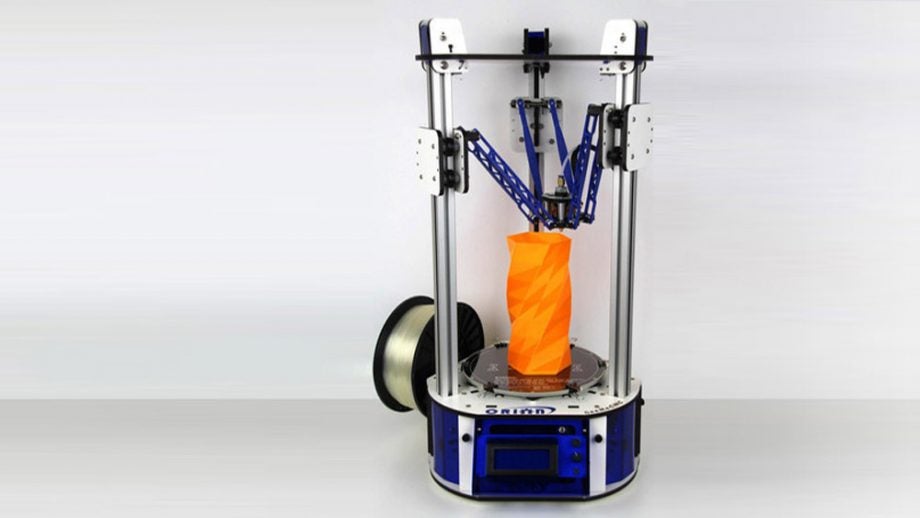
Verdict
Pros
- Consistently successful prints
- Easily cleaned
- SD card slot for USB-free printing
Cons
- Slightly uneven print finish
- Fiddly setup process
- Not the fastest nor quietest
Key Specifications
- Review Price: £1320.00
- 150mm (diameter) x 235mm (height) print area
- SD card slot
- Single print nozzle (0.5mm supplied)
- Removable build platform
What is the SeeMeCNC Orion Delta?
The Orion Delta is a 3D printer in a “delta” configuration – clue’s in the name, see? Rather than the printer nozzle moving along the standard X/Y/Z axes, it’s moved around by three arms that roll up and down three tall towers that stand around the printing platform.
Like most small-scale 3D printers, it uses the FDM (Fused Deposition Modelling) printing method. A strand of plastic filament is fed from a reel to the printing nozzle, which heats it and squirts it out in layers to build up the 3D model.
At just over £1300 the Orion Delta’s not quite a budget option, but it just about has the features and performance to justify its cost.
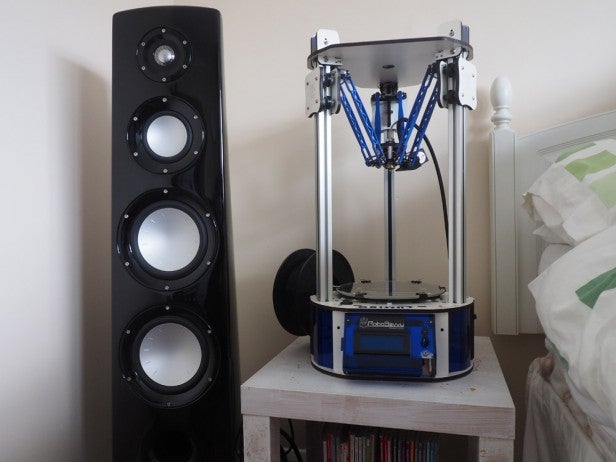
SeeMeCNC Orion Delta – Design
The Orion Delta’s design is dominated by those three aluminium towers and the blue skeleton arms attached to them. It’s certainly a striking machine.
Look a bit closer, though, and you notice where the costs have been cut. From a distance those blue arms could be mistaken for anodised aluminium, but they’re just plastic, and many of the other structural parts are made from vinyl-covered MDF.
Our test machine had taken a bit of a battering in transit – one of the MDF guides for the printing material was almost completely broken off, and some of the plastic surrounding the front panel was also smashed. SeeMeCNC has apparently been made aware that its packaging isn’t quite sufficient, but this still raises a question around durability.
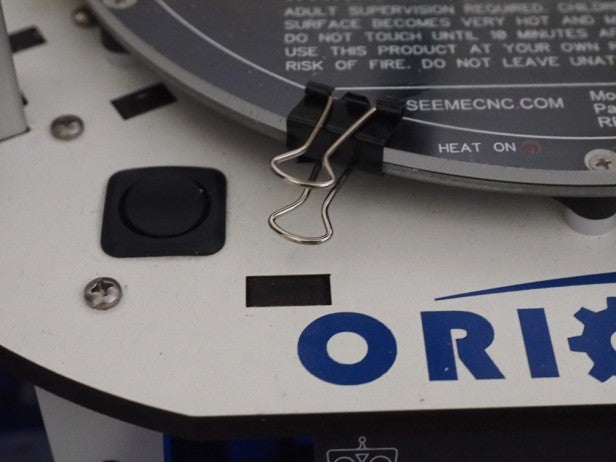
Because of the delta configuration, the Orion’s build platform is round and comes with a removeable glass plate that fits on top, held in place by six small bulldog clips. It’s 6 inches across, and the nozzle can print up to 9 inches high. Hardly small, but if you’re looking to print big, look elsewhere.
The front panel is fairly spartan, with a 4-line monochrome LCD screen, a push-to-select rotary knob, a Stop button and an SD card slot around the left side.
The inclusion of an SD card slot is rather handy, and something missing from many cheaper 3D printers. It means there’s no need for the Orion Delta to be tied to a computer at any point to upload print files, and you’re therefore less restricted in where you position it.
As this is a single-nozzle printer, there’s just one holder for printing material, on the back-left corner. Ours came supplied with a 1lb roll of 1.75mm-thick ABS filament to get started.
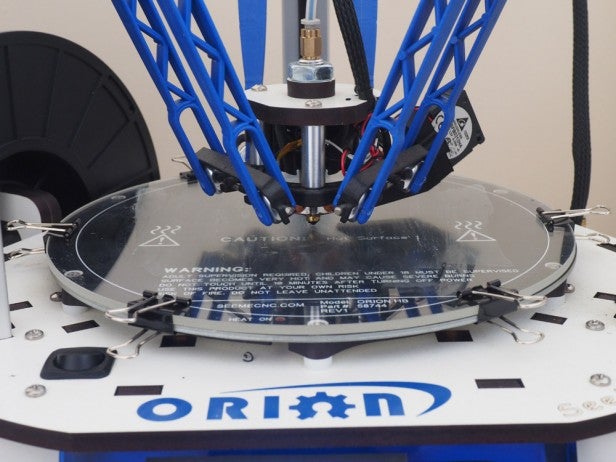
SeeMeCNC Orion Delta – Setup
Getting the Orion Delta ready for printing involved many of the trials and tribulations associated with early-generation 3D printers. There wasn’t much construction involved, at least, and feeding the plastic printing material through to the nozzle was very simple, as was clipping the glass printing platform onto the bed using the supplied bulldog clips.
The niggles start when you have to set the nozzle height. The rotary knob that’s used for navigating the menus also performs the duty of moving the printing head up and down for setting the Z height – how high the nozzle sits above the platform when printing. This isn’t an exact science at the best of times, but the imprecise movements the head made when the knob was turned resulted in a lot of frustration. One second the nozzle would be 2-3mm above the platform, the next it would be touching the glass, with no setting in between.
Thankfully, the LCD screen gives a more exact indication of how much you’re adjusting the height, so we got to a decent printing level with a little trial and error.
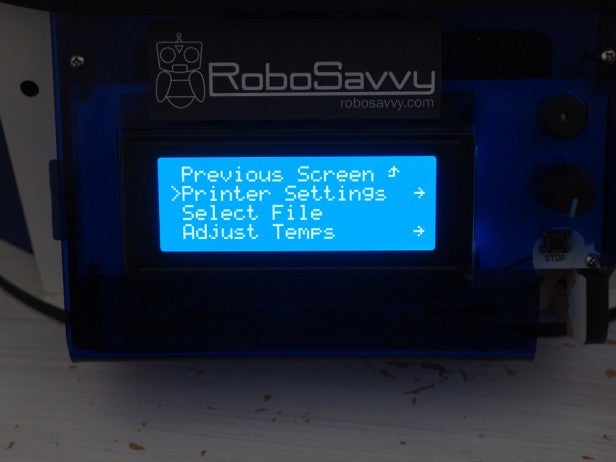
Ensuring this printing height remains constant across the platform is also troublesome. Instead of selecting a calibration option from the menus, you have to select some code off the SD card, which runs a program that drops the nozzle to the Z height in the middle of the platform and then moves it toward each of the three support towers. You have to look closely to check whether the nozzle dips or rises in relation to the glass, and adjust each tower accordingly. This is done by turning a screw on the tower clockwise or anti-clockwise. The whole process feels a bit homebrew.
Once that’s all set, it’s time to… Oh, set the Z height again, in case the tower adjustment has knocked things out of whack. What joy.
Right, then it’s time to get printing… After you’ve given the printing platform a light coating with a glue stick. You know the kind – you probably used it for sticking glitter onto paper at school. This helps the print stick to the glass.
SeeMeCNC Orion Delta – Performance
To start printing, you can either choose a file from the SD card or connect directly to your computer and print from some host software. If you choose the former route, you’ll still need some compatible software to convert your 3D source files into the G-code (.GCO) format that the Orion Delta likes – we used MatterControl.
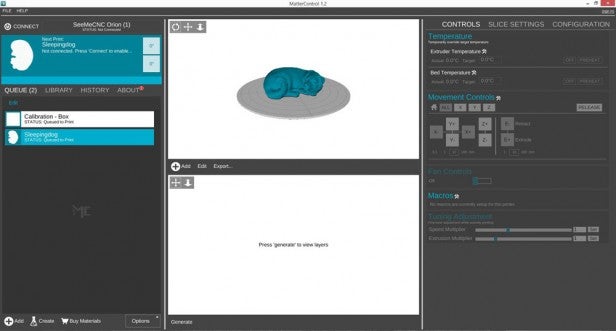
The third-party MatterControl software is fully compatible with the Orion Delta, and very user friendly
It’s in the software that you need to make some crucial choices. Is the 3D model set to print in the optimum position, or does it need to be rotated? Would it be best to print a raft – a thin base layer that helps stop the edges of a print curl up? Does the model have any large overhangs that require you to print a support structure alongside it? Are the platform and nozzle set to the correct temperatures for the type of plastic you’re using? Do you need to adjust the scale of the print? Checking all these things can save valuable time and plastic.
Our first few prints on the Orion Delta were largely unsuccessful, thanks in part to the nozzle being a little too high – damn you, Z height adjustment! – and because the default objects pre-loaded on the SD card turned out to have the platform temperature set to 90 degrees. Once we ramped it up to 100 degrees – which took around 16 minutes from cold on a wintry day – the ABS plastic stuck much better.
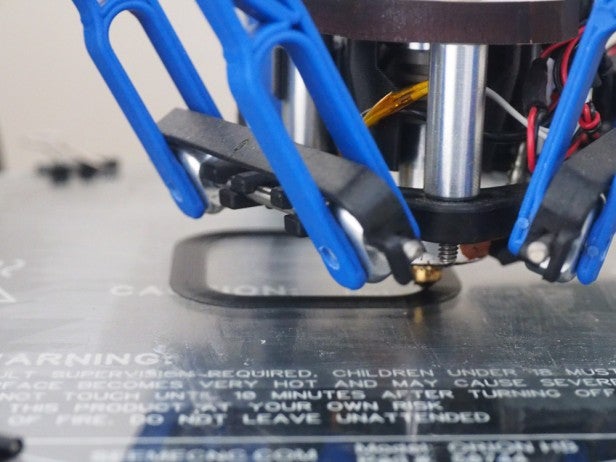
Some of the pre-loaded objects weren’t all that impressive, so we took a quick trip to Thingiverse.com and found some more intricate designs, as well as creating a few ourselves on 3dtin.com. The Orion Delta rose to the challenge, consistently turning out prints without problems. We very rarely needed to print a raft, either, with the printed objects generally sticking firmly to the glue-coated glass bed until it cooled.
Using the supplied ABS plastic – it can also accept the PLA or nylon varieties, but comes optimised for ABS – the print quality wasn’t super-crisp, even at a fine 0.1mm layer resolution. There were more small surface defects than we noticed on prints from the MakerBot Replicator 2X or even the cheaper CEL Robox. But they were quite slight, and could easily be tidied up with the use of a sharp knife.
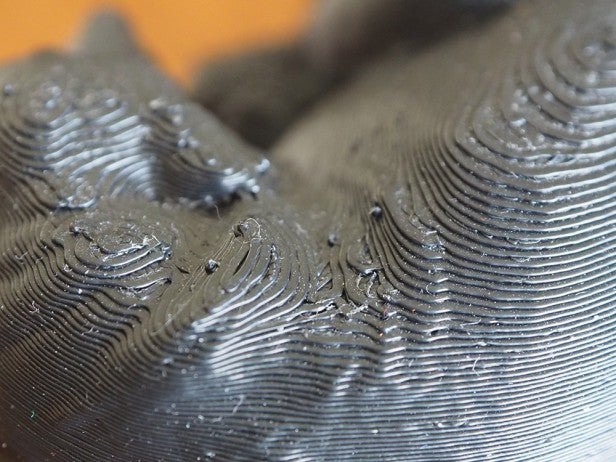
A test print with layering resolution set at 0.2mm – a good compromise between speed and quality. Note some slight surface blobbing
It’s a fairly loud machine, regularly reaching 65dB from 1m away, and rarely dropping below 60dB. It’s not the fastest, either – one test print that took 1 hour 35 minutes on the MakerBot Replicator 2X printed in 2 hours 1 minute on the Orion Delta, despite using the same resolution and fill settings. The Replicator 2X does, however, cost over £600 more.
Should I buy the SeeMeCNC Orion Delta?
If you’re prepared to put in the initial work getting the Orion Delta set up, it’ll reward you with consistent results.
It’s not the fastest, quietest, simplest, cheapest nor most precise, however. In fact, the only area in which it excels is cleanliness – the open framework and removable glass platform make it far easier to mop up after a printing session.
A solid purchase as a first 3D printer, then, rather than a stellar one.
SEE ALSO: The best smart-home products reviewed
Verdict
Get past the fiddly setup process and the Orion Delta 3D printer offers decent all-round performance for the price.
Thanks to RoboSavvy for supplying the test unit.


